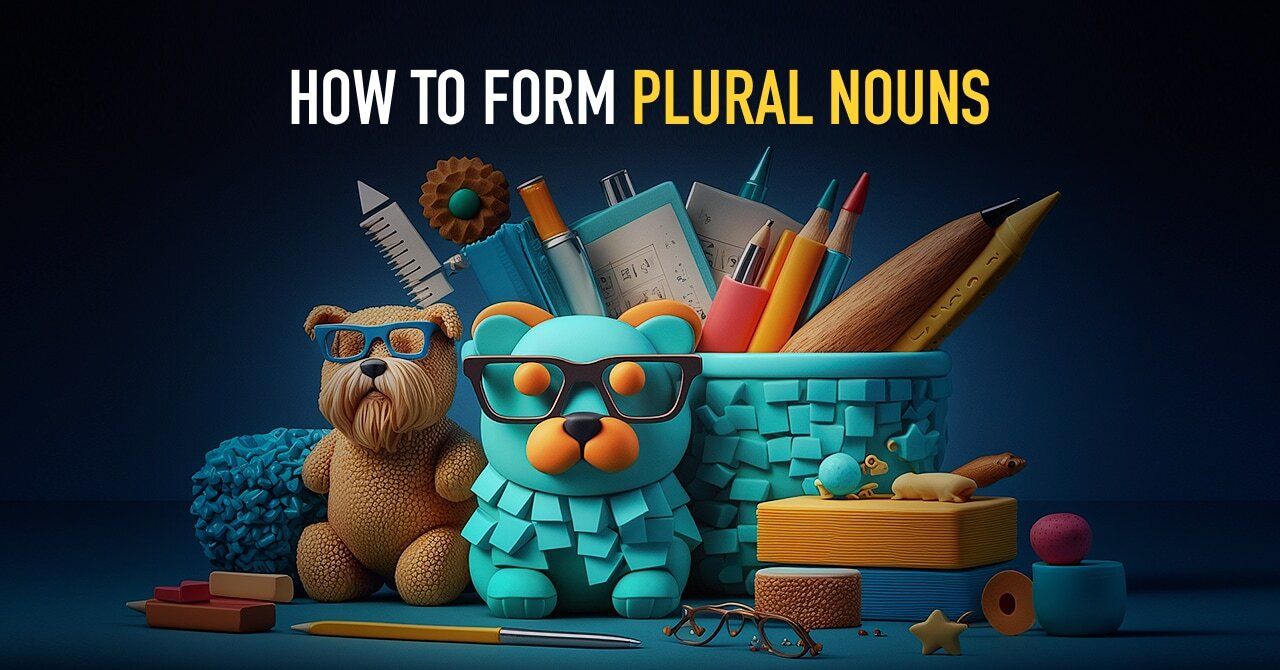
Simple Techniques to Form Plural Nouns
Asides from adding -s to nouns to convert them to the plural form, some nouns require -es instead. This brings us to types of nouns and how their plural forms are obtained.
The English language is a language with quite a lot of semantic rules and guidelines following the construction of its words, phrases, and sentences. Sometimes they come together to make the most sense. And other times, it might be the most confusing thing you could ever see.
Whether as a native or ESL (English as a second language) speaker, you need to know the basics of English. One of those basics is learning about nouns: what plural nouns are and how they are formed.
What are plural nouns?
According to the rules in the English language, when making plurals of words, the generic thing to do is to add an -s to the last letter of the word. This works, but there are cases where just adding an -s to the noun doesn’t result in the plural forms of the said noun.
Asides from adding -s to nouns to convert them to the plural form, some nouns require -es instead. This brings us to types of nouns and how their plural forms are obtained.
Types of nouns
The word class noun has two variations. The first is the singular noun. The second is irregular nouns. All you need to do with singular nouns is add an -s or an -es to the words depending on how they end. And sometimes, making their plural nouns comes with a change in the original letters of the word with the addition of an -es; an example is seen in turning the singular form of “knife” to the plural noun form “knives.”
Singular nouns and their plurals
In the case of singular nouns, the rules of engagement in forming their plurals are straightforward.
Singular nouns, as the name implies, represent one thing: a desk, a house, a school, or an elephant.
Plural nouns, on the other hand, represent when there are more than one of that thing or animal; for example, two desks, a few elephants, and three schools.
However, adding -s to singular words is not the only way to depict the plural form of words. Some words don’t work with -s added to make the plurals. Instead, they require the addition of the -es to the word.
These words sometimes need some letters changed to accommodate the new suffix, which will form the plural noun of these words. Here are a few examples:
glass-glasses
puppy-puppies
toothbrush-toothbrushes
knife-knives
a loaf of bread-a few loaves of bread.
Irregular nouns and their plurals
Here is where the real work is regarding nouns and their plurals. Because irregular nouns are not like singular nouns, the same rules that apply to singular nouns do not apply to irregular nouns. Theirs are more rigid and will change depending on the word.
This is because each irregular noun has its unique plural form. Here are a few examples of unique plural forms of irregular nouns: child-children, thief-thieves, mouse-mice, sheep-sheep (the plural form of this word remains the same, regardless of the number present.)
Unlike regular nouns, you can add -s or -es depending on the word’s ending. For irregular nouns, you would have to learn their plural forms.
Rules of plural nouns
Plural nouns follow certain rules because nouns are so frequently used in grammar. Regardless of what your profession might be, these rules have to be learned and properly implemented. Of course, learning them all will not happen overnight, but with practice, it will get easier. Here are rules to guide:
- Making regular nouns plural, add -s to the end of the word: farm-farms, horse-horses, meal-meals.
- When singular nouns end in s, ss, sh, ch, x, or z, add -es to the words: fish-fishes, fox-foxes, cutlass-cutlasses, church-churches.
- In cases where the nouns end with -s or -z, they will require double -s or -z before adding the -es suffix, as the case may be, to form the plural word. Examples: fez-fezzes.
- For nouns ending with -f or -fe, the -f or -fe will often change to -ve in the plural form before the -s are added.
- If the second to the last letter in the noun is a vowel and the noun ends with a -y, all that needs to be done is to add an -s. Example: bay-bays, lay-lays.
- If the noun ends with an -o, adding the word with -es makes the plural form. Example: potato-potatoes.
Conclusion
As earlier established, there are many ways to form plural nouns. However, there are guidelines to follow to make the process easier. Though many English words don’t follow these rules, there is a need to learn the plural form of such words and always put them into practice.
Hello! I am Moses, an expert content writer, editor, and copywriter. I have a Master's degree in journalism, media studies, and communication. I enjoy creating content.

